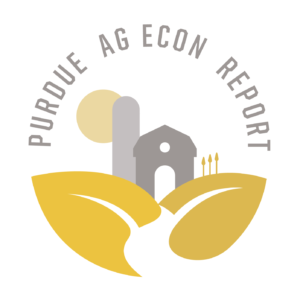Indiana Inheritance Taxes: Are Now Gone!
May 24, 2013
PAER-2013-02
Gerry Harrison, Professor
A significant development in Indiana law involved the total repeals of the Indiana inheritance and related death taxes. Governor Mike Pence signed a bill that eliminated these taxes on May 8, 2013. The repeal is effective for any deaths on or after January 1, 2013. Indiana had been one of only 6 states with an inheritance tax.
These changes for Indiana come at a time when the federal estate tax has had major changes as well. Now, the federal estate credit is equivalent to the tax on $5.25 million. This means without an Indiana inheritance tax Indiana estates have to be greater than $5.25 million before any state or federal death taxes would be due.
This however does not eliminate other costs for the administration of an estate. Appraisals of property values, income tax liabilities and legal work will generally still be costs for handling a decedent’s estate. But for many estates the repeal of the Indiana inheritance tax is potentially a significant administrative savings for heirs.
The Evolution to Repeal
The removal of these taxes on heirs has been a long time in coming. Here we review some of that process and how these taxes worked before the recent repeal, including some changes by 2012 legislation that had already put the Indiana inheritance taxes on a 10 year phase-out. Again, these 2012 laws are now void.
For many years the Indiana inheritance tax exempted certain asset transfers such as transfers to a surviving spouse. In addition, life insurance payable to an individual was exempt from the inheritance tax.
Class A beneficiaries, which included children and grandchildren, were expanded in 2012 to include, for example, the widow of a stepchild. Plus the Class A exemption increased from $100,000 to $250,000 starting in 2012. Furthermore the 2012 law put the inheritance tax law on an incremental phase out until totally gone by 2022.
For most decedent’s estates there was no or very little Indiana inheritance tax. However, the inheritance tax was an issue for those transferring large amounts of capital wealth to heirs and for transfer to unrelated parties known as Class C beneficiaries. Class C beneficiaries had only a $100 exemption and the tax rates ranged from 10% to a 20%. For example, three siblings inheriting a $1 million parcel of land from a family friend had an inheritance tax of about $100,000.
Class B beneficiaries which included close relatives, siblings, and nieces and nephews had only a $500 exemption with progressive tax rates from 7% to 15% compared to rates of 1% to 10% for Class A beneficiaries.
Since farmland values increased substantially in recent years. Landowners had faced significant Indiana inheritance taxes. For example, land valued at $4.5 million that was to go to three children would have had an Indiana inheritance tax per child of $72,250 or $216,750 for the three.
